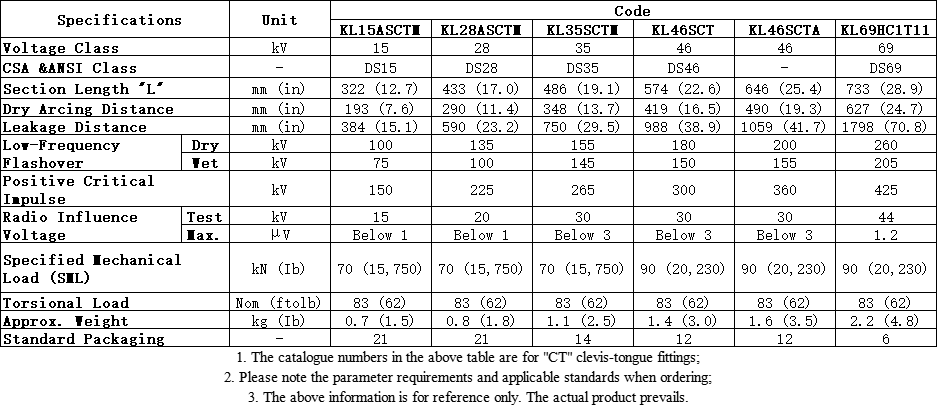This 24kV composite deadend insulator is designed specifically for distribution grid applications. The manufacturing process involves precise engineering, modern production facilities, and meticulous quality control. The insulator is accompanied by relevant quality assurance certifications.
During operation, it effectively isolates conductors and bears substantial mechanical loads. The Tongues fittings, made of either aluminium or iron, provide a reliable connection with other line components. It exhibits excellent electrical insulation properties, sufficient mechanical strength, and high resistance to environmental factors. This makes it an essential part of power distribution, especially in various outdoor and challenging scenarios.
Standards:
IEC 61109: 2008; ANSI C29.13
Specifications:


Application:
It is mainly used to terminate and support conductors in the distribution power grid. Its main function is to provide reliable electrical insulation and mechanical anchoring, which is crucial for the uninterrupted power supply and the integrity of the distribution network.
Features:
Meeting the demands of the distribution grid, it can operate dependably over an extended period, minimizing the need for frequent replacements and ensuring the consistent distribution of electricity.
Its construction and material composition are optimized to meet the distribution voltage levels. It addresses the typical insulation requirements in a distribution power grid more efficiently than some other insulator types.
Taking into account the various environmental conditions in different locations, it has features that enable it to withstand these challenges and maintain the normal operation of the power grid.
With good performance in handling different mechanical forces and environmental variations, it can maintain its insulating and anchoring functions for conductors in a wide range of operating conditions, especially in those where reliable dead-ending is essential.





















